
Subic: A Coastal Paradise in the Philippines
Discover Subic: A perfect blend of history, adventure, and natural beauty along the picturesque coastline of Luzon in the Philippines.
Subic, nestled along the western coastline of Luzon in the Philippines, is a gem for tourists seeking a blend of adventure and relaxation. Known for its rich history and natural beauty, Subic offers a diverse array of experiences suited for all types of travelers. Whether you're a history buff, a nature enthusiast, or someone in search of serene beaches, Subic has something to cater to your interests. The Subic Bay Freeport Zone, a former US naval base, has been transformed into a bustling hub of tourism and commerce. Here, you'll find world-class resorts, theme parks, and duty-free shopping centers. The area also boasts a vibrant nightlife, with an array of restaurants and bars offering local and international cuisine. Nature lovers will be delighted by Subic's lush forests and stunning beaches. The Zoobic Safari and Ocean Adventure are must-visit attractions, offering unique wildlife experiences. For those looking to explore the underwater world, Subic Bay is famous for its wreck diving sites, where you can explore sunken ships from World War II. For a touch of history, visit the Spanish Gate and the Subic Bay Lighthouse, which offer glimpses into the area's colonial past. Adventure seekers can enjoy activities such as zip-lining, jungle trekking, and water sports. The local Aeta community also offers cultural tours, providing insight into their traditional way of life.
Local tips in Subic
- Visit during the dry season, from November to April, for the best weather.
- Book accommodations in advance, especially during peak tourist seasons.
- Bring cash, as not all establishments accept credit cards.
- Try local delicacies such as fresh seafood and traditional Filipino dishes.
- Rent a car or hire a local guide to explore the area more conveniently.
- Respect local customs and traditions when visiting cultural sites.
Subic: A Coastal Paradise in the Philippines
Subic, nestled along the western coastline of Luzon in the Philippines, is a gem for tourists seeking a blend of adventure and relaxation. Known for its rich history and natural beauty, Subic offers a diverse array of experiences suited for all types of travelers. Whether you're a history buff, a nature enthusiast, or someone in search of serene beaches, Subic has something to cater to your interests. The Subic Bay Freeport Zone, a former US naval base, has been transformed into a bustling hub of tourism and commerce. Here, you'll find world-class resorts, theme parks, and duty-free shopping centers. The area also boasts a vibrant nightlife, with an array of restaurants and bars offering local and international cuisine. Nature lovers will be delighted by Subic's lush forests and stunning beaches. The Zoobic Safari and Ocean Adventure are must-visit attractions, offering unique wildlife experiences. For those looking to explore the underwater world, Subic Bay is famous for its wreck diving sites, where you can explore sunken ships from World War II. For a touch of history, visit the Spanish Gate and the Subic Bay Lighthouse, which offer glimpses into the area's colonial past. Adventure seekers can enjoy activities such as zip-lining, jungle trekking, and water sports. The local Aeta community also offers cultural tours, providing insight into their traditional way of life.
When is the best time to go to Subic?
Iconic landmarks you can’t miss
Zoobic Safari
Discover the wonders of wildlife at Zoobic Safari, a family-friendly zoo in Subic, Bataan, featuring interactive animal encounters and educational experiences.

Ocean Adventure, Subic Bay
Experience thrilling marine encounters and unforgettable shows at Ocean Adventure, Subic Bay, a perfect family-friendly destination in the Philippines.

Moonbay Marina Leisure Resort
Experience the tranquil beauty of Moonbay Marina Leisure Resort in Subic Bay, where luxury meets adventure in a stunning waterfront setting.

Inflatable Island
Experience the ultimate fun at Inflatable Island, Zambales - the water park destination for thrilling adventures and unforgettable memories!

Whiterock Beach Hotel & Waterpark
Discover the ultimate beach getaway at Whiterock Beach Hotel & Waterpark in Subic, Zambales, where adventure meets relaxation in a tropical paradise.
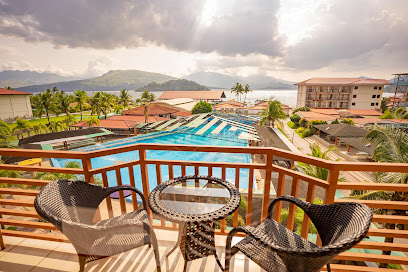
Blue Rock Resort
Experience the ultimate tropical escape at Blue Rock Resort, a beachfront paradise in Olongapo, Zambales, perfect for relaxation and adventure seekers.

Pier One Bar & Grill
Experience the vibrant flavors of Subic Bay at Pier One Bar & Grill, where delicious grilled dishes meet stunning waterfront views.
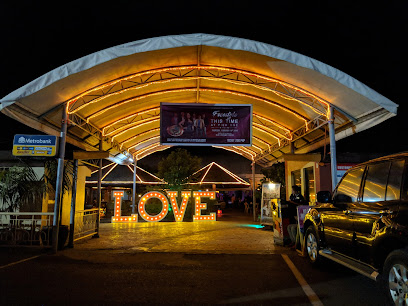
Subic Bay Yacht Club
Experience the beauty of Subic Bay at the luxurious Subic Bay Yacht Club, a premier destination for sailing, dining, and relaxation.

Magic Lagoon Bar
Discover the flavors of Subic Bay at Magic Lagoon Bar, where delicious grilled dishes meet stunning waterfront views in a vibrant atmosphere.
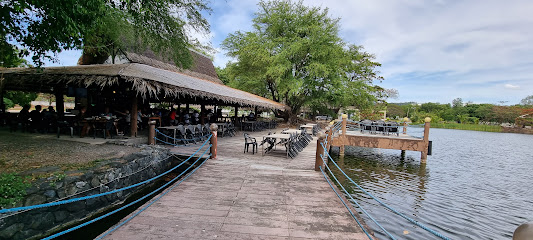
Central Park Reef Resort
Experience the perfect blend of relaxation and adventure at Central Park Reef Resort in the beautiful Subic, Zambales.

Sit-n-Bull
Discover the vibrant flavors of Sit-n-Bull in Barrio Barretto, where delicious grilled dishes and hearty breakfasts await every traveler.

Holy Grounds Coffee House
Discover the perfect blend of ambiance and flavor at Holy Grounds Coffee House in Subic Bay, your ultimate coffee retreat in the Philippines.

Subic Bay
Experience the breathtaking beauty and adventure of Subic Bay, a coastal paradise in the Philippines with stunning views and vibrant marine life.

Playa Papagayo Beach Inn and Restaurant
Experience the serene beauty of Playa Papagayo Beach Inn and Restaurant, where relaxation meets adventure in stunning Zambales.

The Dove Monument (Kalapati)
Discover the Dove Monument in Olongapo, a magnificent beacon of peace and a must-visit historical landmark in Zambales, Philippines.

Unmissable attractions to see
Las Casas Filipinas De Acuzar
Las Casas Filipinas De Acuzar: A heritage resort where history meets luxury amidst the beautiful landscapes of Bataan, Philippines.

Zoobic Safari
Embark on an unforgettable wildlife adventure at Zoobic Safari in Subic, where nature and fun come together for an exhilarating experience.

Zoobic Safari
Discover the wonders of wildlife at Zoobic Safari, Subic Bay's premier destination for animal encounters and educational experiences.

Inflatable Island
Dive into the ultimate water adventure at Inflatable Island, the largest floating water park in Asia located in Zambales, Philippines.

Anawangin Cove
Experience the Unmatched Natural Beauty of Anawangin Cove: A Tropical Paradise in the Heart of Zambales.

Holy Rosary Parish Church
Explore the captivating Holy Rosary Parish Church in Angeles, Pampanga, where faith meets stunning architecture and rich cultural heritage.

San Guillermo Parish Church (Bacolor Church)
Explore the historic San Guillermo Parish Church in Bacolor, Pampanga, a stunning blend of architectural beauty and deep cultural significance.
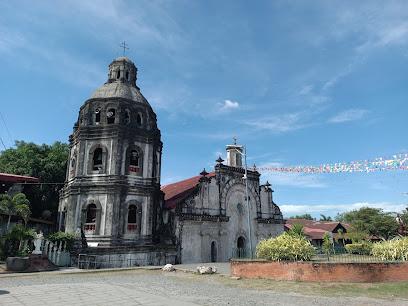
Mt. Samat National Shrine
Explore Mt. Samat National Shrine, a historical landmark in Bataan, offering panoramic views and a tribute to World War II heroes.
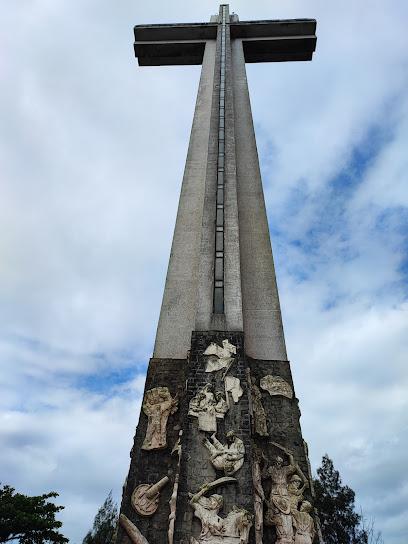
Mt Pinatubo
Experience the breathtaking beauty of Mt. Pinatubo, a majestic volcano in Zambales, offering stunning views, rich culture, and thrilling adventures.

Malawaan Picnic Park
Discover the serene beauty of Malawaan Picnic Park, a perfect escape for nature lovers and families in Subic Bay.

Clark Museum and 4D theater
Explore Clark Museum and 4D Theater for an enriching experience of history and culture in the heart of Pampanga, Philippines.

Nayong Pilipino Clark
Discover the vibrant culture and nature of the Philippines at Nayong Pilipino Clark, a unique theme park showcasing the country's rich heritage.

Japan-Philippines Friendship Tower
Explore the Japan-Philippines Friendship Tower in Bagac, a historical landmark symbolizing the enduring bond between Japan and the Philippines.

Bataan Tourism Center
Explore the historical and natural wonders of Bataan at the Bataan Tourism Center, your ultimate guide to an unforgettable Philippine adventure.

President Ramon Magsaysay's House
Explore the ancestral home of President Ramon Magsaysay, a historical landmark in Zambales celebrating Philippine heritage and leadership.

Essential places to dine
Sit-n-Bull
Discover the flavors of grilled cuisine at Sit-n-Bull in Barrio Barretto - where every meal is a delicious adventure.

Wild Herbs Restaurant
Experience the rich flavors of Filipino cuisine at Wild Herbs Restaurant in Olongapo – where every dish tells a story.

Le Soleil et La Lune
Experience exquisite dining at Le Soleil et La Lune in Subic Bay—where local flavors meet stunning waterfront views.

Arnie Belle
Discover authentic Filipino flavors at Arnie Belle in Subic – where tradition meets taste in every delightful dish.

Mukbang Unlimeated Samgyeopsal
Discover the ultimate destination for Korean barbecue lovers at Mukbang Unlimeated Samgyeopsal in Subic – where flavor meets tradition.

Kopibreak
Discover Kopibreak in Subic - where delectable dishes meet cozy ambiance for an unforgettable dining experience.

Sunset Restaurant
Experience exquisite dining at Sunset Restaurant in Subic - where fresh seafood meets breathtaking sunset views.

Spice International
Experience global flavors at Spice International in Subic—where culinary delights meet vibrant ambiance.

Naya Bar and Grill
Experience delicious grilled dishes at Naya Bar and Grill in Subic – where vibrant flavors meet a lively atmosphere.

Retro Throwback Cafe
Discover nostalgia at Retro Throwback Cafe in Subic—where delicious comfort food meets charming vintage vibes.

P.M Bistro @ 93rd
Experience the vibrant atmosphere and delicious cuisine at P.M Bistro @ 93rd in Subic – where every meal is a celebration.

188 Cafe Subic
Discover delightful flavors at 188 Cafe Subic - where local charm meets culinary excellence in Zambales.
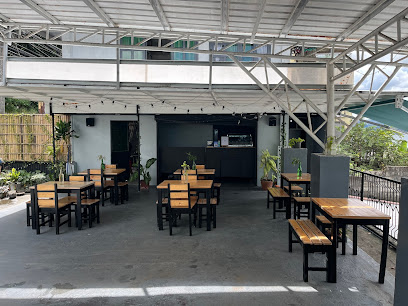
Samgyup House Subic Branch
Experience authentic Korean BBQ at Samgyup House in Subic – a must-visit destination for food lovers seeking delicious flavors.

Totoys Kitchenette
Experience authentic Filipino cuisine at Totoys Kitchenette in Subic - where every dish tells a story of rich culinary heritage.

Smokes and Bottles Bar and Grill
Experience the vibrant nightlife at Smokes and Bottles Bar and Grill in Subic - where delicious grills meet refreshing drinks!

Markets, malls and hidden boutiques
Waltermart Subic
Discover Waltermart Subic, a vibrant shopping mall offering a mix of local and international brands, dining options, and a lively atmosphere in Zambales.

Waltermart Supermarket
Experience local flavors and global brands at Waltermart Supermarket in Subic – your ultimate shopping destination in Zambales.

Savemore Market Subic
Explore Savemore Market Subic for fresh local produce, international snacks, and an authentic taste of Philippine grocery shopping!

Puregold Subic Town
Shop at Puregold Subic Town for the freshest local and international products in Subic, Zambales – a must-visit for every traveler.
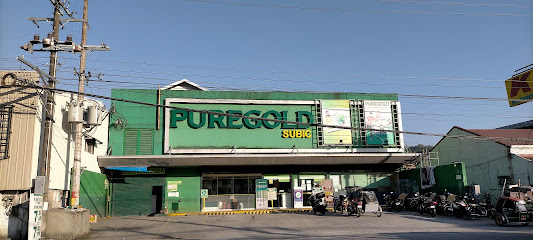
Waltermart Department Store
Experience the ultimate shopping destination at Waltermart Department Store in Subic, where convenience meets variety for every tourist's needs.

Watsons Waltermart Subic A (Click & Collect)
Discover a world of health and beauty at Watsons Waltermart Subic A, your go-to shop for all personal care essentials in Subic.

WM Subic
Explore the vibrant WM Subic shopping mall in Zambales, where shopping, dining, and entertainment come together for an unforgettable experience.

BUDGET JEWEL
Explore Budget Jewel in Olongapo for handcrafted jewelry that captures the essence of Filipino artistry at budget-friendly prices.

Vista Lifestyle Center Subic
Discover endless shopping, dining, and entertainment at Vista Lifestyle Center in Subic, a vibrant hub for tourists and locals alike.

PUTING USOK VAPE SHOP
Explore the vibrant world of vaping at Puting Usok Vape Shop in Subic, offering a diverse range of products in a welcoming atmosphere.

Happy Thoughts Shop Subic
Discover unique souvenirs, delightful gifts, and a cozy atmosphere at Happy Thoughts Shop in Subic, where creativity and community come together.

JAEREENE'S VARIETY STORE
Discover local flavors and essentials at JAEREENE'S VARIETY STORE, your convenient stop in Subic, Zambales.

Bebs Fashion Boutique
Discover your unique style at Bebs Fashion Boutique in Subic, the ultimate destination for trendy clothing and personalized service.

Miniso
Explore Miniso in Subic for whimsical gifts and everyday essentials, capturing the essence of your travels through unique finds.

LLGStyle
Explore the vibrant fashion of LLGStyle in Subic, where trendy clothing meets local culture for an unforgettable shopping experience.

Essential bars & hidden hideouts
Sit-n-Bull
Explore the vibrant flavors of Sit-n-Bull, a grill restaurant in Barrio Barretto, offering delicious grilled dishes and hearty breakfast options for every palate.
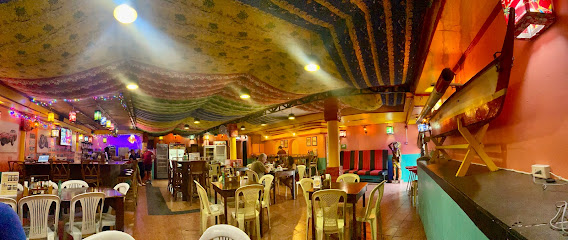
Cheap Charlies Hangout Bar
Discover the lively atmosphere and affordable drinks at Cheap Charlies Hangout Bar in Olongapo, your go-to destination for a fun night out.

The Wet Spot
Discover the vibrant nightlife of Olongapo at The Wet Spot, a lively bar offering refreshing drinks, friendly service, and a memorable atmosphere.
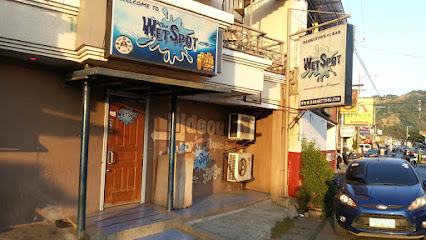
BarCelona Roof Top Music & Sports Bar
Discover the lively BarCelona Roof Top Music & Sports Bar in Olongapo for unforgettable nights filled with music, sports, and breathtaking views.

Queen Victoria Bar
Discover the heartbeat of Olongapo's nightlife at Queen Victoria Bar, where great drinks and lively entertainment await.

Hideaway Sports Bar (Formerly Dive In)
Discover the charm of Hideaway Sports Bar in Olongapo, where local flavors meet a friendly atmosphere for an unforgettable night out.

Sit n Bull Annex Bar
Experience the lively atmosphere and refreshing drinks at Sit n Bull Annex Bar in Olongapo, a perfect spot for relaxation and socializing.

Naya Bar and Grill
Experience the best of grilled dishes at Naya Bar and Grill in Subic, Zambales, where flavor meets fun in a lively atmosphere.

The Hot Zone bar
Discover vibrant nightlife at The Hot Zone Bar in Olongapo, where cocktails, music, and entertainment create an unforgettable experience.

Rosie's Tavern
Discover the lively nightlife at Rosie's Tavern in Olongapo, a perfect blend of bar, club, and pub experiences for all visitors.

Smokes and Bottles Bar and Grill
Experience the best of Subic's nightlife at Smokes and Bottles Bar and Grill, where delicious food and vibrant drinks await you.

Paradise Group Subic
Discover the vibrant atmosphere and refreshing drinks at Paradise Group Subic, your ideal retreat in Olongapo, Zambales.

Red Baron Bar
Experience the vibrant nightlife of Olongapo City at the Red Baron Bar, where great drinks and a lively atmosphere await.

Bosing Restobar and Billiads
Experience authentic Filipino cuisine and a lively atmosphere at Bosing Restobar and Billiards in Subic, a must-visit for food and fun enthusiasts.

JAMS BAR
Discover the vibrant nightlife of Subic at JAMS BAR, a perfect blend of refreshing drinks and lively atmosphere for every traveler.

Local Phrases
-
- HelloKamusta
[kah-moo-stah] - GoodbyePaalam
[pah-ah-lahm] - YesOo
[oh-oh] - NoHindi
[hin-dee] - Please/You're welcomeMangyaring
[man-gyah-ring] - Thank youSalamat
[sah-lah-mat] - Excuse me/SorryPasensya na
[pah-sen-syah nah] - How are you?Kamusta ka?
[kah-moo-stah kah] - Fine. And you?Mabuti. Ikaw?
[mah-boo-tee. ee-kahw] - Do you speak English?Nag-e-English ka ba?
[nag-eh-ehng-gleesh kah bah] - I don't understandHindi ko maintindihan
[hin-dee koh main-tin-dee-hahn]
- HelloKamusta
-
- I'd like to see the menu, pleaseGusto kong makita ang menu, pakiusap
[goos-toh kong mah-kee-tah ahng meh-noo, pah-kee-oo-sahp] - I don't eat meatHindi ako kumakain ng karne
[hin-dee ah-koh koo-mah-kah-een ng kahr-neh] - Cheers!Tagay!
[tah-gahy] - I would like to pay, pleaseGusto kong magbayad, pakiusap
[goos-toh kong mahg-bah-yahd, pah-kee-oo-sahp]
- I'd like to see the menu, pleaseGusto kong makita ang menu, pakiusap
-
- Help!Tulong!
[too-long] - Go away!Lumayo ka!
[loo-mah-yoh kah] - Call the Police!Tawag sa Pulis!
[tah-wahg sah poo-lis] - Call a doctor!Tawag sa doktor!
[tah-wahg sah dohk-tohr] - I'm lostNawawala ako
[nah-wah-wah-lah ah-koh] - I'm illMay sakit ako
[mahy sah-keet ah-koh]
- Help!Tulong!
-
- I'd like to buy...Gusto kong bumili ng...
[goos-toh kong boo-mee-lee ng...] - I'm just lookingNagtitignan lang ako
[nag-tee-tee-nyan lahng ah-koh] - How much is it?Magkano ito?
[mahg-kah-noh ee-toh] - That's too expensiveMasyadong mahal
[mah-syah-dohng mah-hahl] - Can you lower the price?Pwede bang babaan ang presyo?
[pweh-deh bahng bah-bah-ahn ahng preh-syoh?]
- I'd like to buy...Gusto kong bumili ng...
-
- What time is it?Anong oras na?
[ah-nawng oh-rah-s nah] - It's one o'clockAlas-una na
[ah-lahs-oo-nah nah] - Half past (10)Alas-dyes y medya
[ah-lahs-dyehs ee mehd-yah] - MorningUmaga
[oo-mah-gah] - AfternoonHapon
[hah-pohn] - EveningGabi
[gah-bee] - YesterdayKahapon
[kah-hah-pohn] - TodayNgayon
[ngah-yohn] - TomorrowBukas
[boo-kahs] - 1Isa
[ee-sah] - 2Dalawa
[dah-lah-wah] - 3Tatlo
[taht-loh] - 4Apat
[ah-paht] - 5Lima
[lee-mah] - 6Anim
[ah-neem] - 7Pito
[pee-toh] - 8Walo
[wah-loh] - 9Siyam
[see-yahm] - 10Sampu
[sahm-poo]
- What time is it?Anong oras na?
-
- Where's a/the...?Nasaan ang...
[nah-sah-ahn ahng...] - What's the address?Ano ang address?
[ah-noh ahng ah-drehs] - Can you show me (on the map)?Pwede mo ba akong ipakita (sa mapa)?
[pweh-deh moh bah ah-kohng ee-pah-kee-tah sah mah-pah?] - When's the next (bus)?Kailan ang susunod na (bus)?
[kah-ee-lahn ahng soo-soo-nohd nah (boos)?] - A ticket (to ....)Isang tiket (papuntang ....)
[ee-sahng tee-keht (pah-poon-tahng ....)]
- Where's a/the...?Nasaan ang...
History of Subic
-
Before the arrival of Spanish colonizers, the area now known as Subic was inhabited by indigenous groups such as the Aeta people. These early inhabitants were hunter-gatherers who lived off the land and sea, relying on fishing, hunting, and foraging. They developed a deep connection to their natural surroundings, which included the lush forests and abundant marine life.
-
In the late 16th century, Spanish explorers arrived in the Philippines, marking the beginning of over three centuries of Spanish rule. Subic Bay was identified as a strategically important location due to its deep waters and natural harbor. However, it wasn't until 1885 that the Spanish established a naval base in Subic Bay to protect their interests in the Pacific. The base was part of a larger network of fortifications that included the nearby Fort Wint on Grande Island.
-
Following the Spanish-American War in 1898, the Philippines was ceded to the United States. Recognizing the strategic significance of Subic Bay, the U.S. Navy took control of the Spanish naval base. In 1901, the U.S. officially established the Subic Bay Naval Station, which would grow to become one of the largest overseas military installations. The base played a critical role during World War II, serving as a repair and supply depot for the U.S. Pacific Fleet.
-
During World War II, Subic Bay was a focal point of military activity. In 1941, Japanese forces invaded the Philippines and took control of Subic Bay, using it as a base for their naval operations. The area was heavily bombarded by Allied forces as they sought to reclaim it. In 1945, Subic Bay was liberated by American and Filipino forces, and the U.S. Navy quickly moved to rebuild and expand the naval base.
-
After World War II, Subic Bay Naval Base underwent significant expansion, becoming a vital logistics and repair hub for the U.S. Seventh Fleet. During the Cold War, Subic Bay's strategic location made it an essential part of America's military presence in Asia. The base supported operations during the Korean War, the Vietnam War, and various other conflicts, serving as a critical point for the deployment and resupply of U.S. forces.
-
In 1991, the eruption of Mount Pinatubo, one of the most powerful volcanic eruptions of the 20th century, caused widespread devastation in the surrounding areas, including Subic Bay. The base suffered significant damage, and combined with the end of the Cold War, this led to the eventual withdrawal of U.S. forces. In 1992, the Philippine government took control of the base, marking the end of nearly a century of American military presence.
-
Following the departure of the U.S. military, the Philippine government transformed Subic Bay into a freeport and special economic zone. The Subic Bay Freeport Zone was established to stimulate economic growth, attract foreign investment, and create jobs. Today, it is a thriving hub for commerce, industry, and tourism, boasting modern infrastructure, pristine beaches, and a vibrant community.
-
Subic's rich cultural heritage is celebrated through various festivals and events. The annual 'Pistang Aeta' honors the traditions of the Aeta community, featuring traditional music, dance, and crafts. 'Subic Bay Festival' showcases the area's maritime history and includes parades, water sports, and culinary fairs. These events highlight the blend of indigenous, Spanish, American, and modern Filipino influences that define Subic's unique cultural landscape.
Subic Essentials
-
Subic is located in the province of Zambales, Philippines. The nearest international airport is Clark International Airport in Angeles City, approximately 80 kilometers away. From Clark, you can take a taxi or a shuttle service to Subic, with the journey typically taking around 1.5 to 2 hours by road. Alternatively, you can fly into Ninoy Aquino International Airport in Manila, which is about 130 kilometers away. From Manila, you can take a bus, taxi, or private car to Subic, with travel time ranging from 3 to 4 hours depending on traffic.
-
Subic offers various transportation options for getting around. Jeepneys and tricycles are the most common and affordable means of transport within the area. Taxis and ride-hailing services like Grab are also available. For more convenience, you can rent a car, which allows you to explore Subic and its surrounding areas at your own pace. There are also shuttle services that operate between major hotels and tourist attractions.
-
The official currency in the Philippines is the Philippine Peso (PHP). Credit cards are widely accepted in hotels, larger restaurants, and shopping centers, but it is advisable to carry cash for smaller establishments and local markets. ATMs are available throughout Subic, but it is recommended to withdraw sufficient cash before heading to more remote areas.
-
Subic is generally a safe destination for tourists. However, it is always important to exercise standard safety precautions. Avoid walking alone at night in unfamiliar areas and be cautious of your belongings in crowded places. While Subic does not have specific high-crime areas targeting tourists, it is advisable to stay vigilant and aware of your surroundings.
-
In case of emergency, dial 911 for immediate assistance. Subic has local police stations and medical facilities available. It is recommended to have travel insurance that covers medical emergencies. For minor health issues, there are pharmacies where you can purchase over-the-counter medications. Subic Bay Metropolitan Authority (SBMA) also has its own emergency response teams.
-
Fashion: Do dress modestly, especially in religious and public places. Avoid wearing overly revealing clothing. Religion: Do respect local customs and traditions. Always behave respectfully in places of worship. Public Transport: Do be courteous and give up your seat to elderly or disabled passengers. Don't eat or drink on public transport. Greetings: Do greet people with a smile and a slight nod of the head. A handshake is also acceptable. Eating & Drinking: Do try local delicacies and accept food offerings graciously. Don't refuse hospitality, as it is considered impolite.
-
To experience Subic like a local, visit the local markets where you can buy fresh seafood and traditional Filipino goods. Engage with locals, as they are often friendly and willing to share stories about the area's history and culture. Don't miss visiting the Subic Bay Freeport Zone, which offers a range of activities from shopping and dining to water sports and wildlife parks. For a unique experience, explore the nearby beaches and enjoy water activities like snorkeling and diving.
Trending Landmark in Subic
-
Zoobic Safari
-
Ocean Adventure, Subic Bay
-
Moonbay Marina Leisure Resort
-
Inflatable Island
-
Whiterock Beach Hotel & Waterpark
-
Blue Rock Resort
-
Pier One Bar & Grill
-
Subic Bay Yacht Club
-
Magic Lagoon Bar
-
Central Park Reef Resort
-
Sit-n-Bull
-
Holy Grounds Coffee House
-
Subic Bay
-
Playa Papagayo Beach Inn and Restaurant
-
The Dove Monument (Kalapati)
Nearby Cities to Subic
-
Things To Do in Angeles City
-
Things To Do in Manila
-
Things To Do in Tagaytay
-
Things To Do in Baguio
-
Things To Do in Sagada
-
Things To Do in Vigan
-
Things To Do in Ilocos Norte
-
Things To Do in Boracay
-
Things To Do in Legazpi
-
Things To Do in Puerto Princesa
-
Things To Do in Palawan
-
Things To Do in Batanes
-
Things To Do in Cebu City
-
Things To Do in Bohol
-
Things To Do in Camiguin











